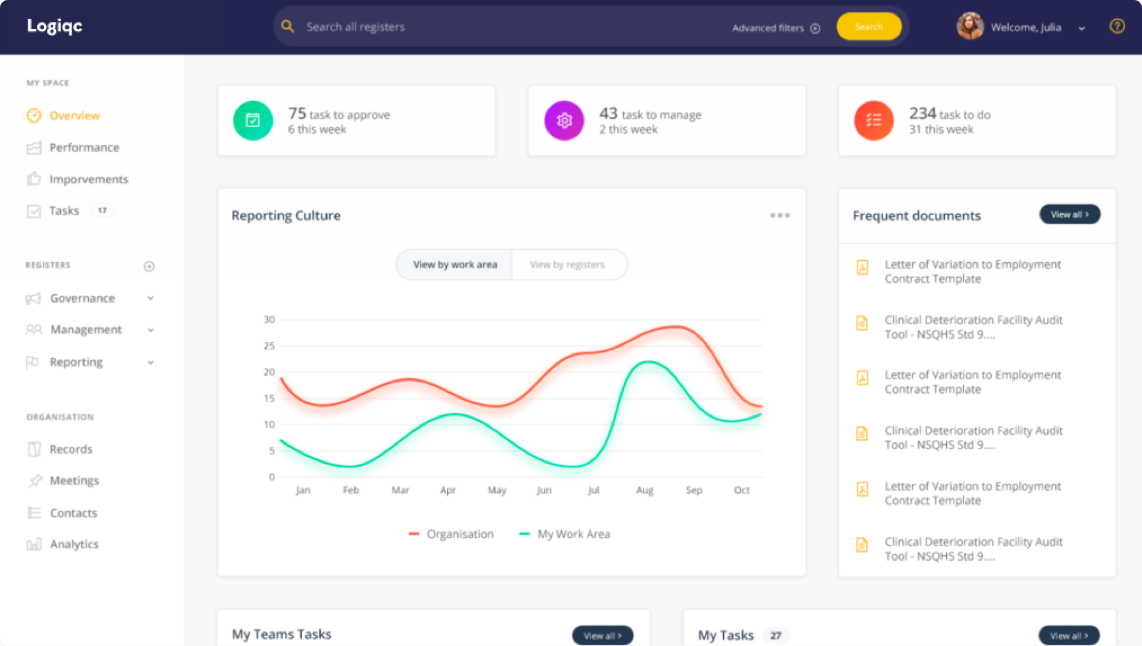ATSICHS Brisbane is a non-profit, community-owned health and human services organisation that caters to the health and well-being needs of Aboriginal and Torres Strait Islander people residing in the Brisbane and Logan areas.
Established in 1973, it has evolved into Queensland’s most extensive and all-encompassing Aboriginal medical health service, proudly holding the distinction of being Australia’s second oldest such service.
With five medical clinics, two dental clinics, a midwifery hub and child and family health services, the importance of timely and precise data cannot be overstated. The efficient and accurate centralisation of data is paramount to developing high-quality reports for a healthcare organisation as vast and varied as ATSICHS Brisbane.
We recently spoke with Director of Corporate Services Jarryd Aleckson, who shared his invaluable experience with our Analytics Integration API. This powerful tool has enabled the organisation to seamlessly link data from multiple sources and generate comprehensive and accurate reports.
What data analytics needs did you hope to address when you trialled the LogiqcQMS Analytics API?
We recently implemented an enterprise-level data reporting environment that includes a modern cloud-based data lakehouse. This combines the strengths of a data lakehouse and data warehouse for applications using structured and unstructured datasets for comprehensive reporting and analytics across the organisation.
The majority of our data is centralised there for reporting and dashboarding. However, prior to the introduction of the LogiqcQMS Analytics API, programmatically connecting to the data source was not possible, and we needed to manually export data from LogiqcQMS to other areas.
The API allows us to efficiently grab and transfer the data to our data lake in a standardised format consistent with other data sources. We can then link this data to generate comprehensive reports from various sources.
Logiqc originally built the API at our request. Since many of our dashboards rely on data from multiple sources, relying solely on the dashboards and reporting within Logiqc is not enough for us. The need to centralise data across other sources was the driving force behind the development of the API.
What are some specific examples of reports that you’ve produced using the Analytics API?
The primary focus of business intelligence is on risk and governance. Currently, we are using it mainly for this purpose. While there are plans for future use cases, we have already established an automatic reporting capability that connects the risk reporting and risk register data from LogiqcQMS and related incidents across to a dashboard that we present to our Risk and Governance Committee.
Additionally, the data report centralises other important information, such as completing a learning task or mandatory qualification by employees in our Human Resources system. This integration allows us to consolidate data from various sources into a single report, which we then share with the committee. By presenting a holistic view of our risk management efforts, the committee can make better-informed decisions across all risk areas.
Before implementing the API, generating the report was entirely manual and took approximately four days to complete every three months. However, with the new API, the report generation process is now almost entirely automated. This has resulted in significant time savings, and the risk of error has also been greatly reduced.
Has accessing LogiqcQMS data via the Analytics API increased senior management engagement with the platform?
While I have not measured the specific impact of the API on engagement, we are implementing other proactive measures to improve our reporting culture, which also contribute to increased engagement with the platform.
I believe that the API will inherently improve engagement with the Logiqc platform. As we present critical data on a dashboard shared with the Board, accuracy and timeliness are paramount, particularly at the director level.
Was the configuration of the API straightforward or was it unusually complex?
Configuring the API took us approximately three hours, thanks in part to the standardisation of our data ingestion pipeline framework. This standardisation means that integrating new data sources into our existing environment is a straightforward process.
At the same time, we didn’t have to spend time gaining access to the API or its features. The API is presented in a straightforward manner, with our data and framework standardised, and the language provided the data in an industry-standard format. There was nothing ambiguous or risky about it.
After the trial, you chose to purchase the product. What did it do well and what did it do not so well?
That’s a hard one since I was the first person to use it, serving as the beta tester during its construction phase. While there wasn’t much documentation available at that time, there is now.
I reached out to Graham (LogiqcSupport) via email to address certain areas that were missing in the documentation. The communication was easy; I received a prompt response, and everything was sorted within an hour.
Do you think that the ability to build customised reports will better position LogiqcQMS data to inform strategic decision-making?
100%. The key report that goes to the Risk and Governance Committee is also accessible to the Board. Being able to actively and dynamically see the data we have in LogiqcQMS combined with other data sources across the organisation, provides them with valuable insights to inform strategic decision-making.
Given their responsibility to drive and lead strategy at a Board level, our operational data helps pinpoint areas of focus, potential risks, and incidents. Armed with this information, they can confidently and effectively shape the overall strategy.




